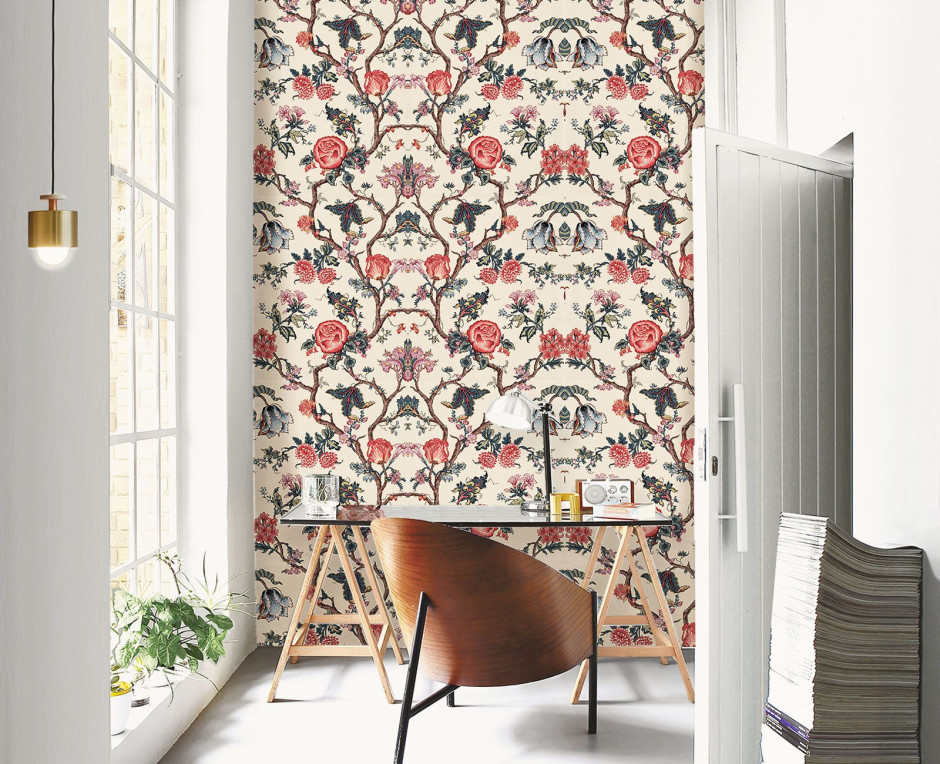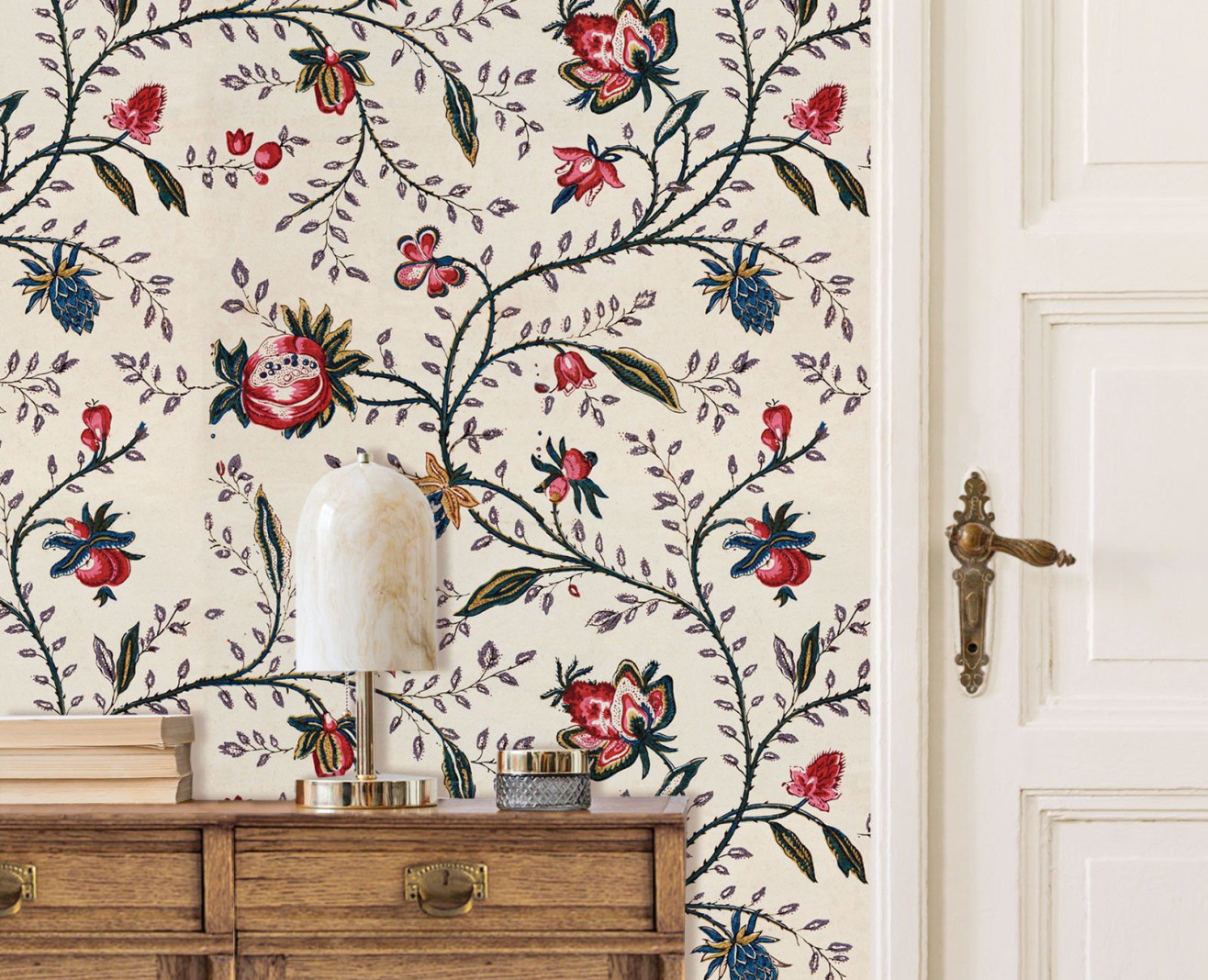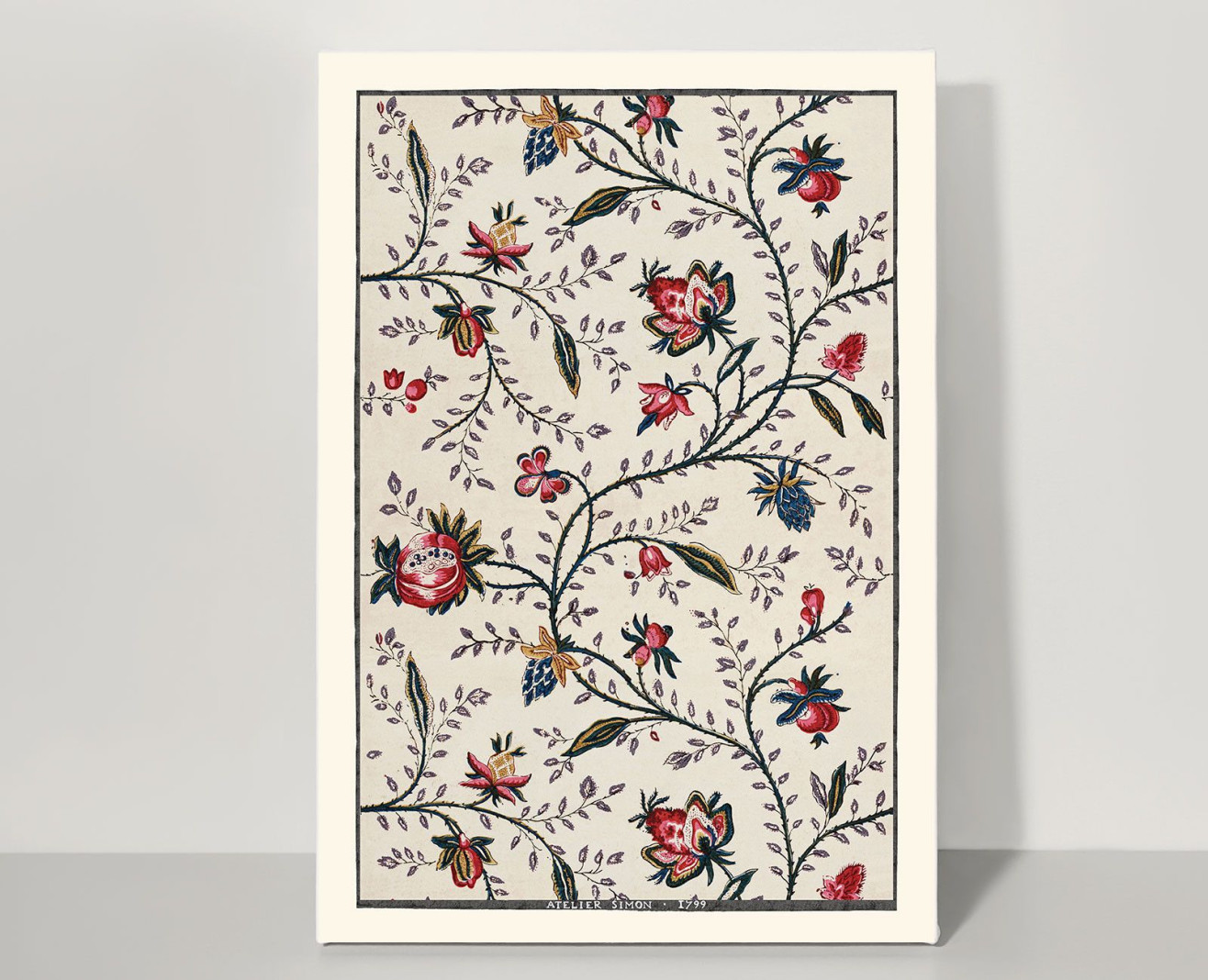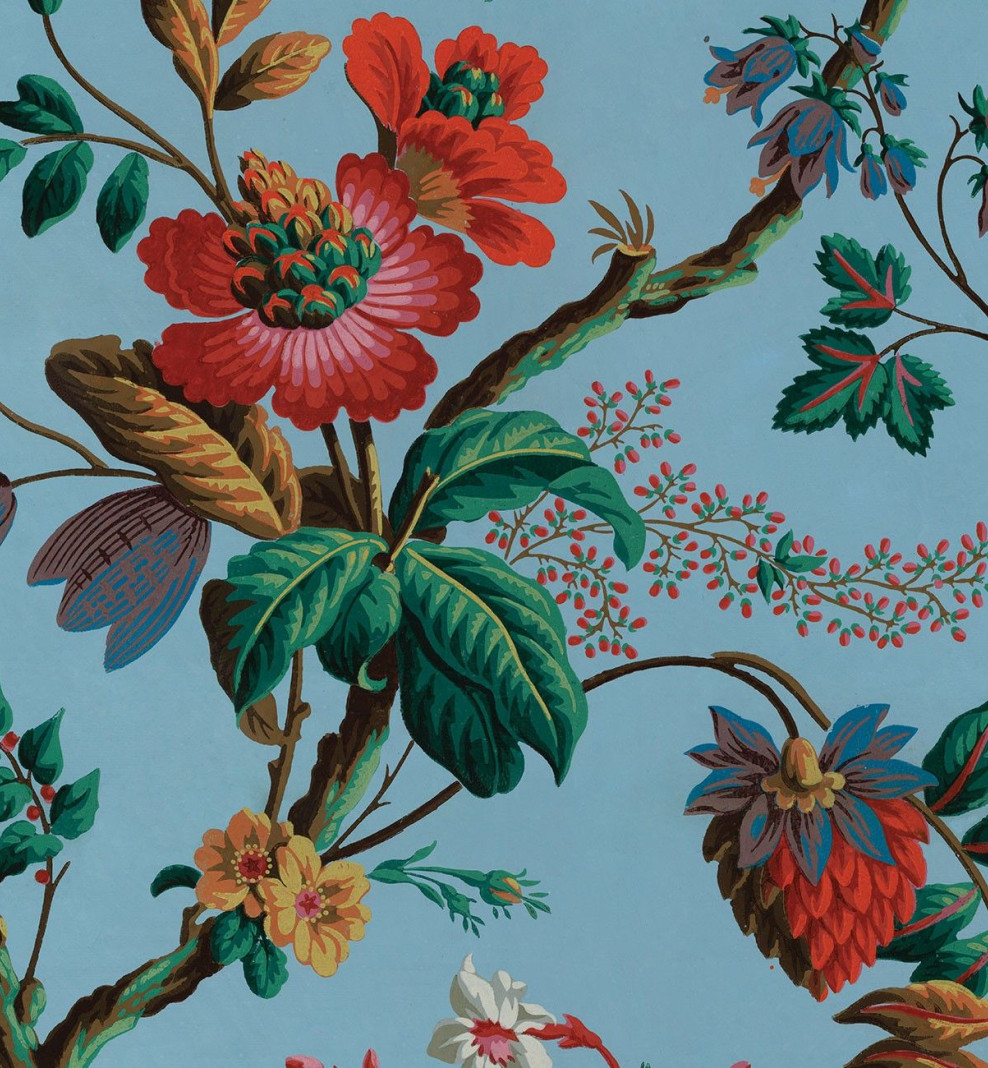No products
- LA PREMIUM finish ideal for walls, kitchen and bathroom
- L’EXTRA finish ideal for woodwork
You still have to place an order for additional boards
(boards are only sold by 3)
Wallpaper Pondichery . 1894
Manufacturer Desfossé & Karth
115,00 €
Designed in 1894, this wallpaper was produced by Manufacturer Desfossé et Karth. Inspired by the typical patterns made by Indians, it represents branches and various exotic flowers, partly colored in red and madder indigo. It evokes "the Indians", a fabric very in vogue between the 17th and the 19th centuries.
The background of the original model was initially hand brushed in beige color, then printed by means of engraved woodblocks in 10 different colors on mechanical pulp paper (i.e. made from wood, not from rag).
To revive this lovely wallpaper and bring it up to date, our workshop carried out a meticulous, digital restoration.
Collection of Musée des Arts Décoratifs de Paris
Photographic credit: Les Arts Décoratifs/ Jean Tholance
MORE INFORMATION ABOUT LEAD TIMES, click here
Founded in 1851, the Manufacture Jules Desfossé is one of the most important in France and Europe. In 1853, after Jules Desfossé had joined with Hippolyte Karth, the Manufacture was named Desfossé and Karth. It distinguishes itself by a purchase policy of printing woodblocks and a close collaboration with the artists of the time. Firmly rooted in the Second Empire, and considered the best, this Manufacture offers wall papers with themes in the taste of time, though sometimes nearly decadent.
1894
Indians fabrics were frequently imported from Asia via the port of Marseille. Following the creation of the Compagnie des Indes Orientales by Colbert in 1664, a great many vessels came back loaded with these fabrics each year in France, inducing incredible enthusiasm.
In 1686, however, importations and production of Indian fabrics were banned by Louis XIV because they were accused of competing with fabrics produced in France. In 1703, Marseille obtained an exemption to manufacture them, on the condition that they were reserved for export. The economic and commercial conditions allowed the Indians manufacturers to expand this industry, thanks to technological transfer from Armenian Indians manufacturers. The port became an important center of production, partly feeding their contraband in France, in particular in Provence.
In a way, Indians have thus symbolized the struggle against royal power...
The representation of exotic vegetation in decoration became fashionable in the 18th century, especially with the "Indiennes". In the middle of the 17th century, brightly printed cotton fabrics (called "Indians ») from the East were extremely successful in Europe, and France in particular. The iconography of these fabrics was composed of birds, fruits, exotic flowers, garlands, arabesques, delicate branches, and trees of life. Their colors were most often associated with indigo blue and madder red. Wallpaper manufacturers followed this fashion by imitating these Indians, spreading their patterns and colors on paper decorations.
Our wallpapers are hung in 3 stages: the preparation of the wall, its pasting, and the hanging. The strips are hung edge to edge and from left to right in the order indicated on the assembly plan supplied with the rolls. To find out more, consult our Hanging instructions page.
Non-woven wallpaper 147g/ square meter
Matching edge to edge
Manufacturing time: 20 business days
Made in France
Standard size: 2 rolls of 60 x 250/350 cm
Owing to the manufacturing process, there could be small variations in colors from one production batch to the next. If possible, avoid buying different parts of the same design several weeks apart.














